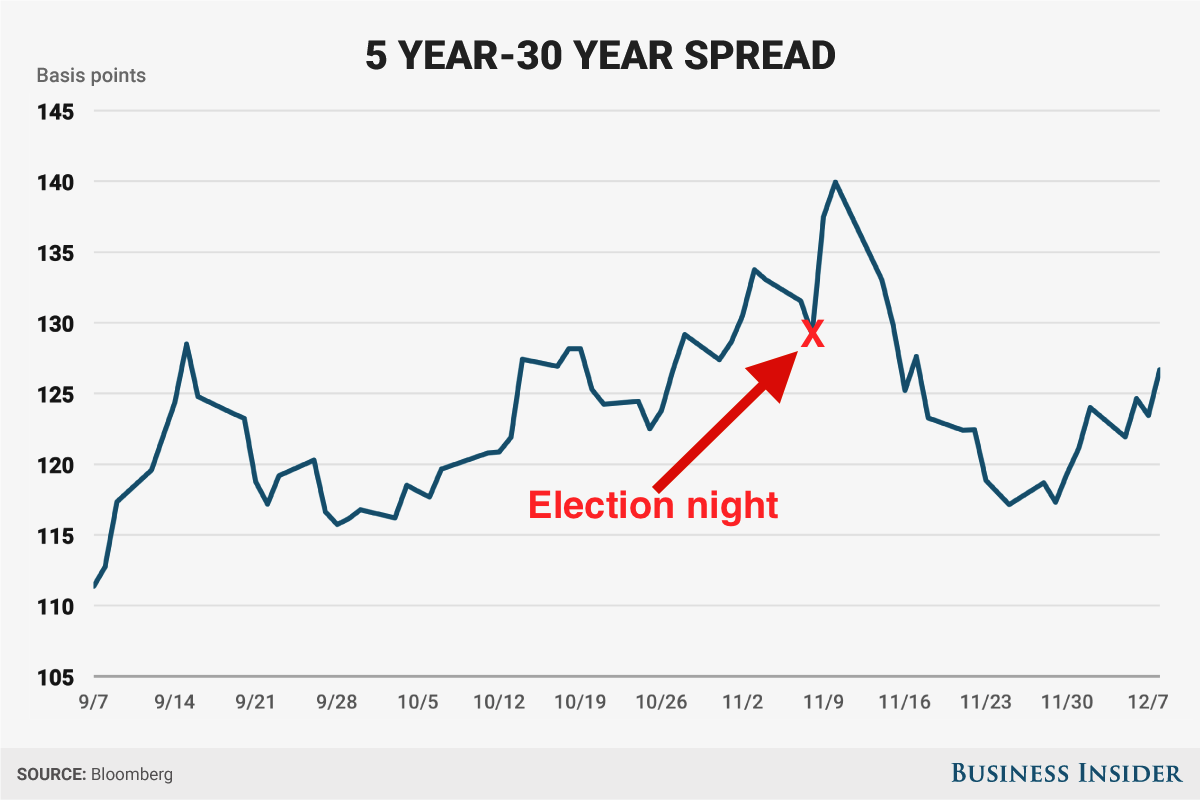The election of Donald Trump has sparked a lot of talk about inflation returning to the United States as a result of his protectionist trade policies and plans for massive infrastructure spending. Bond traders have dumped US Treasurys in anticipation that the 40-year bull market in bonds is over.
However, something is missing from the equation, and that something is a steeper yield curve. The yield curve is the the difference between short-term and long-term interest rates and it “steepens” when the longer-term rates rise faster than short-term, because investors are pricing in future inflation and stronger economic growth.
Instead, since the Nov. 8 election, the gap between the 5-year yield and the 30-year yield has actually narrowed.
It’s partly because of expectations that the Federal Reserve will raise short-term rates. But it’s also a clue that bond investors aren’t as confident about long-term growth as the conventional wisdom suggests.
Indeed, Wall Street has mostly come out calling for the bond market rout to continue.
Michael Hartnett, chief investment strategist at Bank of America Merrill Lynch was speaking at a panel on Wednesday that was attended by Yahoo Finance's Myles Udland. He said (emphasis added):
"On July 11, 2016, a couple weeks after Brexit, the 30-year Treasury yield fell to 2.088%. On that day, the Swiss government could borrow money for 50 years - out to 2076, a year most of us won't be around to see - at a negative interest rate.
"And that day was the day that the greatest bull market ever, in the bond market, ended. Since then, yields have been rising. And that without a doubt is the biggest event of 2016."
However, not everyone is on board with this.
Jim Sarni, CFA & Managing Principal at Payden&Rygel says that investors shouldn't get too far ahead of themselves and "drink the cool aid [sic] that bonds will underperform." In fact, Sarni believes that Treasury yields will remain "relatively low" compared to the rest of the world and that US bonds are the "most attractive in the world."
To give you an idea of just how attractive US bonds are all you need to do is look at the US 10-year yield compared to the German 10-year yield. The US 10-year yield (2.40%) is about 200 basis points more than the German 10-year (0.38%), and the spread between the two is the widest its been in 27 years.

"Investor fears of higher interest rates have caused volatility, which we believe presents opportunities in the fixed income markets," Sarni says.

